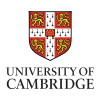Snabbfakta
-
- Montpellier
Ansök senast: 2024-12-08
4 funded positions available in Montpellier for a PhD training network on Transcriptional noise[...]
4 Funded Positions Available in Montpellier for a PhD Training Network on Transcriptional Noise in Development and Disease
Send CV, publications, summary and references to:
Position Information:
A fundamental question in biology is how cellular processes are so reproducible despite the inherent stochasticity of biochemical reactions. For transcription in particular, imaging revealed that genes function in an intermittent fashion, with periods of activity followed by periods of inactivity. This transcriptional noise has two sources: intrinsic noise arises from the stochasticity of reactions leading to transcription initiation, while extrinsic noise comes from environmental or global changes affecting the entire cell. While transcriptional fluctuations need to be dampened during embryonic development, they can also generate diversity. Thus, they can be both useful and detrimental.
In this training network, we will decipher the mechanism and functions of transcriptional noise during development and disease. In particular, we will disentangle extrinsic and intrinsic noise and therefore determine how transcription is affected by the cell’s life. We will use two biological models: Drosophila embryos where noise buffering is important, and HIV-1 latency where stochasticity is beneficial. We will directly image transcription in live cells and combine quantitative imaging data with mathematical modelling.
The network will train 4 PhD Students by 4 teams located in Montpellier (E. Bertrand, S. Chambeyron, M. Lagha, O. Radulescu). It will provide common activities, interdisciplinary training and an environment uniting biologists and mathematicians.
Funding provided for 3 years. Deadline for application: May 25th, 2020.
Key words: transcription, imaging, quantitative biology, modeling, developmental biology, HIV-1, heterochromatin.
Fellowship 1: Drs. E. Bertrand / O. Radulescu
Mathematical Modelling of HIV-1 Transcription: Contribution of Extrinsic and Intrinsic Noise to Latency Exit
Latent cells infected with HIV-1 prevent patients from being cured. In these cells, viral transcription is brief and rare, rather than totally non-existent. Because of this residual activity, latent viruses can remain at undetectable levels for years and yet rapidly provoke viral rebounds after stopping antiviral treatments. Several mechanisms have been proposed to trigger latency exit. Spontaneous activation of the viral promoter can occur because of the stochastic nature of transcription initiation (intrinsic noise). External events affecting the entire cell can also activate viral transcription (extrinsic noise). In this project, the PhD student will use single molecule methods to image the transcriptional activity of HIV-1 in live single cells. He/she will then develop mathematical models to extract the contribution of extrinsic vs intrinsic factors to HIV-1 transcriptional bursts. Applicants should be skilled in statistics and scripting, and should aim at being trained in both wet and dry biological sciences.
Fellowship 2: Dr. M. Lagha
Impact of Paused Polymerase on Transcriptional Noise During Development
Live cell imaging of transcription revealed that transcription is discontinuous and occurs in bursts. These have a great potential for generating cell-to-cell variability but, in the context of a developing organism, must be regulated to ensure reproducible outcomes. In this project, the PhD student will decipher the impact of paused polymerase on transcriptional noise in Drosophila embryos. Indeed, during early development, there is a switch in transcriptional regulation whereby developmental promoters acquire paused polymerases as a major regulatory checkpoint. The effects of pausing on transcriptional noise have not yet been characterized and could in principle either buffer or increase noise. The student will employ quantitative live imaging of transcription combined to mathematical approaches, to detect each polymerase initiation event for each nucleus in vivo and to model extrinsic and intrinsic noise. Candidates should be cell/developmental biologists with interest in gene expression and quantitative biology. Prior experience in Drosophila genetics and coding is a plus.
Fellowship 3: Dr. S. Chambeyron
Impact of Chromatin Compaction on Transcription Noise
Transcription is a discontinuous process leading to fluctuations of RNA levels even between isogenic cells. One mechanism generating transcriptional noise is a stochastic switching of promoters between active and inactive states. The inactive state is presumably controlled by chromatin compaction. However, as gene models were only imaged in euchromatin, there is a surprising lack of knowledge on how transcription fluctuates in a repressive heterochromatin environment. By imaging the transcription of heterochromatic regions in live Drosophila embryos, this project will decipher the impact of local chromatin states on transcriptional noise. Further analysis of extrinsic vs intrinsic noise will determine how heterochromatinization is regulated by the local cell environment. The student will monitor nascent transcription of loci located in heterochromatin in live embryos. To demonstrate a role of chromatin marks in transcription fluctuations, he/she will deplete chromatin-modifying enzymes using optogenetic tools. Candidates should have an interest in Drosophila genetics and programming knowledge would be appreciated.
Fellowship 4: Drs. M. Lagha / O. Radulescu
Stochastic Transcriptional Bursting in Space and Time
Decades of genetic studies in Drosophila have dissected the gene regulatory networks responsible for the establishment of precise patterns of gene expression. In certain cases, network architecture reveals error correction mechanisms. However, recent live imaging studies show that transcription occurs in a random on/off manner called “bursts”. The details of how transcription factors control bursting are unknown and are the focus of this proposal. Our project is concerned with a particular class of TFs called pioneer factors, such as Zelda. To study the impact of TF pioneer factors on transcriptional bursting in single cells, we will employ quantitative live imaging of transcription (MS2/MCP) combined to an innovative signal processing approach, able to position each single polymerase initiation event for each nucleus in vivo. With a view to understanding how order emerges from stochastic local events, both microscopic and coarse-grained mesoscopic models will be developed. The micro-meso relationship will be rigorously studied in the framework of limit theorems for Markov processes. This project involves a collaboration with John Reinitz (U Chicago, USA). Candidates should be interested in mathematical and quantitative biology; expertise in programming is mandatory. Students with interdisciplinary profiles are strongly encouraged to apply.
#J-18808-Ljbffr











